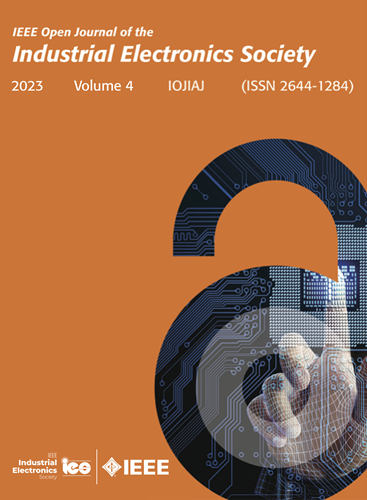基于 ESO 的分数阶滑动模式控制器用于具有不匹配干扰的降压转换器:设计与实验
IF 7.2
1区 工程技术
Q1 AUTOMATION & CONTROL SYSTEMS
引用次数: 0
摘要
提出了一种基于分数阶扩展状态观测器(FOSMC+FOESO)控制器的分数阶滑模控制方法,用于衰减buck变换器的匹配和不匹配干扰,即负载突变和模型误差。首先,提出了一种具有匹配干扰和不匹配干扰的分数阶降压变换器。FOESO设计用于估计和补偿不匹配的干扰,并间接估计匹配的干扰,从而降低匹配和不匹配干扰的灵敏度。根据所提出的分数阶模型,引入带有干扰估计项和指数逼近率的分数阶滑模曲面,提高了系统的抗干扰能力和电压跟踪性能。利用分数阶微积分的莱布尼茨规则,用Lyapunov函数验证了系统的稳定性。最后,通过仿真和实验结果的比较,表明所提出的FOSMC+FOESO控制器比传统滑模控制(SMC)、FOSMC和基于ESO方法的SMC具有更好的电压跟踪性能。本文章由计算机程序翻译,如有差异,请以英文原文为准。
Fractional-Order Sliding Mode Controller Based on ESO for a Buck Converter With Mismatched Disturbances: Design and Experiments
A novel fractional-order sliding mode control method based on a fractional-order extended state observer (FOSMC+FOESO) controller is developed to attenuate the matched and mismatched disturbances of a buck converter, i.e., load mutation and model errors. First, a novel fractional-order buck converter with matched and mismatched disturbances which can be derived from each other is proposed. The FOESO is designed to estimate and compensate for the mismatched disturbance and indirectly estimate the matched disturbance, which can reduce the sensitivity of the matched and mismatched disturbances. According to the proposed fractional-order model, the fractional-order sliding mode surface with the disturbance estimation term and exponential approach rate are introduced to improve the antidisturbance ability and voltage tracking performance of the system. The system stability is verified by a Lyapunov function with the Leibniz rule of fractional calculus. Finally, the comparison of several simulation and experimental results illustrates that the proposed FOSMC+FOESO controller has the superior voltage tracking performances than traditional sliding mode control (SMC), FOSMC, and SMC based on ESO methods.
求助全文
通过发布文献求助,成功后即可免费获取论文全文。
去求助
来源期刊

IEEE Transactions on Industrial Electronics
工程技术-工程:电子与电气
CiteScore
16.80
自引率
9.10%
发文量
1396
审稿时长
6.3 months
期刊介绍:
Journal Name: IEEE Transactions on Industrial Electronics
Publication Frequency: Monthly
Scope:
The scope of IEEE Transactions on Industrial Electronics encompasses the following areas:
Applications of electronics, controls, and communications in industrial and manufacturing systems and processes.
Power electronics and drive control techniques.
System control and signal processing.
Fault detection and diagnosis.
Power systems.
Instrumentation, measurement, and testing.
Modeling and simulation.
Motion control.
Robotics.
Sensors and actuators.
Implementation of neural networks, fuzzy logic, and artificial intelligence in industrial systems.
Factory automation.
Communication and computer networks.
 求助内容:
求助内容: 应助结果提醒方式:
应助结果提醒方式:


